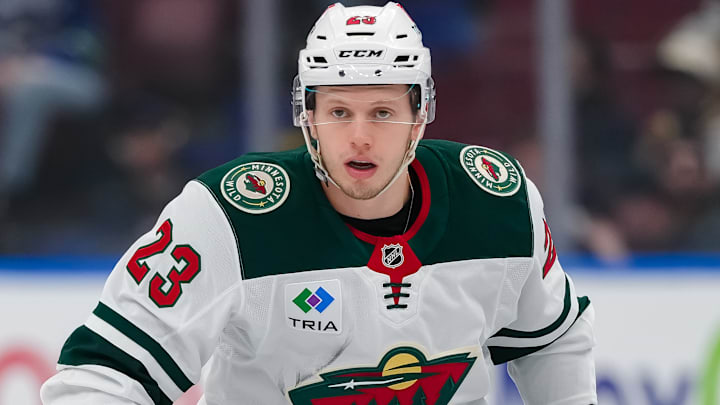The Minnesota Wild made a savvy move by inking Marco Rossi to a three-year deal worth $15 million on Friday. The contract ended speculation regarding Rossi’s future in Minnesota. Reports had emerged that the Wild were involved in talks with the Seattle Kraken and Vancouver Canucks about sending the 23-year-old elsewhere.
That rumor mill has now come crashing to a halt as my colleague Justin Godfrey noted in an earlier piece. Now, the focus turns to the fallout from the deal. Initial reaction has been largely positive despite some reservations about Rossi being a true top-six center.
But as NHL insider Frank Servalli noted, Rossi’s contract is where it should be. During an appearance on B/R Open Ice on August 22, Seravalli stated:
“This is a nice compromise. We all know that Marco Rossi was on the trade block. There were teams that were inquiring, couldn’t find a deal that worked because the Wild weren’t looking for just a second-round pick in return. They didn’t want futures- They wanted roster help that could help them now.”
Seravalli’s comments point toward a situation in which the Wild simply didn’t get a trade offer that made sense to them. So, it was much more beneficial to the club to sign Rossi than trade him away for magic beans.
He added:
“They were never against bringing Marco Rossi back. But it was never going to be at the seven-year, $7 million per contract sort of like the one Matt Boldy signed.”
"It was never going to be at the 7-year, $7M (like Matt Boldy)."@frank_seravalli breaks down how Minnesota and Marco Rossi landed on his new, 3-year contract ✍️ pic.twitter.com/6o8ypVxYyZ
— B/R Open Ice (@BR_OpenIce) August 22, 2025
If anything, it seems the contract is one both sides can live with for now. The contract kicks a potential problem can down the road, but that’s a bridge everyone will cross when they get to it.
Extension takes Wild to Rossi’s final RFA year

The three-year extension is somewhat of a curious term. Rossi is 23 this season. So, the three-year pact takes him to his age-26 season, one year before he can become a UFA. That situation means, as Seravalli also pointed out, that the Wild will have one more season for Rossi as a UFA.
With the escalating AAV, the Wild will owe Rossi a $6 million qualifying offer when the deal expires in the summer of 2028. Given the rising cap and so on, the $6 million qualifying offer may not be a huge deal. If Rossi blossoms into a bona fide middle-six center, the $6 million may not be an issue whatsoever for the Wild.
From Rossi’s perspective, it’s interesting that he didn’t sign a deal that would walk him straight to unrestricted free agency. Perhaps this was the Wild balking at that fourth year, hoping that their cap structure would be much different then. As a result, the club could afford to pay Rossi a bigger contract down the road.
So, let’s not get ahead of ourselves. The Wild managed to avoid a major crisis by re-signing Rossi. The hope is that any animosity is not there and the two sides can work toward bringing the Wild back into the playoffs this upcoming season.
